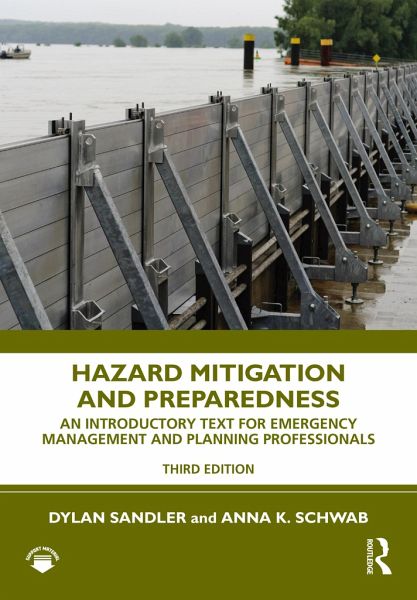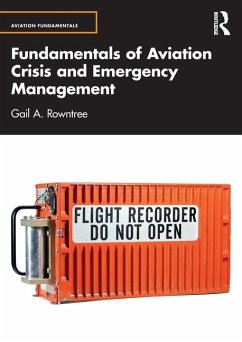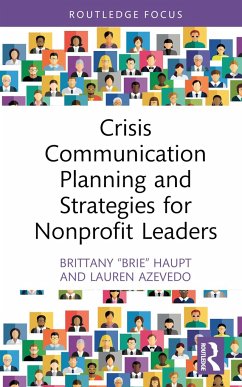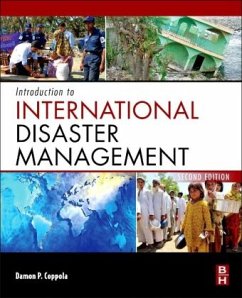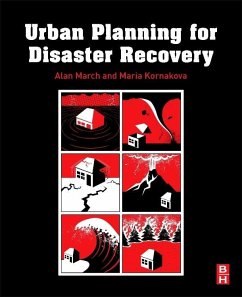Dylan Sandler (USA The University of North Carolina at Chapel HillAnna K. Schwab (US The University of North Carolina at Chapel Hill
Gebundenes Buch
Hazard Mitigation and Preparedness
An Introductory Text for Emergency Management and Planning Professionals
Versandkostenfrei!
Versandfertig in 1-2 Wochen
Weitere Ausgaben:

PAYBACK Punkte
42 °P sammeln!




An essential text for todayâ s emerging professionals and higher education community, the third edition of Hazard Mitigation and Preparedness provides accessible and actionable strategies to create safer, more resilient communities.
Dylan Sandler serves as a Senior Planner at the New York City Department of City Planning. In this role, he manages citywide zoning changes and advises the City Planning Commission on land use policy. His areas of focus include hazard mitigation, climate adaptation, distributed energy production and battery storage, urban agriculture, industrial policy, and economic development. Following Hurricane Sandy, Mr. Sandler served as the project manager of the Resilient Industry Study, an initiative to help industrial businesses recover from damage caused by Hurricane Sandy and reduce risk during future events. He also serves as the agency's liaison on the city's Hazard Mitigation Plan. Previously, Mr. Sandler worked as a consultant supporting the National Oceanic and Atmospheric Administration to implement that National Climate Action Plan and the National Ocean Policy. In this role, Mr. Sandler facilitated communication and policy development across federal agencies focused on coastal planning and climate mitigation and adaptation. Mr. Sandler also served as a research associate at the Center for the Study of Natural Hazards and Disasters located at the University of North Carolina at Chapel Hill, where he conducted applied research regarding hazard mitigation, sea level rise adaptation and disaster recovery planning, and helped maintain the Center's website and social media. Mr. Sandler has direct experience with hazard mitigation planning at the local and state level. Working with the North Carolina Division of Emergency Management, he reviewed local plans for state and federal compliance, authored a chapter on climate change for the North Carolina State Hazard Mitigation Plan, and helped compile materials used in training sessions for hazard mitigation planners. Anna K. Schwab is program manager at the US Department of Homeland Security Coastal Resilience Center of Excellence (CRC) administered at the University of North Carolina at Chapel Hill (UNC-CH). The Center focuses on conducting research associated with natural hazards and disasters, translating the findings to practice and educating the next generation of hazards scholars and practitioners. In her role as Program Manager, Ms. Schwab works collaboratively with diverse partners around the country to coordinate the research, education, and outreach projects of the Center, acts as liaison among participating principal investigators, and facilitates engagement of the CRC Advisory Board. Prior to her current position at the Resilience Center, Ms. Schwab served as project manager and research associate at the Hazard Mitigation Planning Initiative, a partnership between UNC-CH and the NC Division of Emergency Management which provided technical assistance to local governments for the development, adoption and implementation of local and regional hazard mitigation plans in compliance with the federal Disaster Mitigation Act. Ms. Schwab also spent many years serving as a research associate and program coordinator for a variety of public service and research initiatives at UNC-CH, with her primary focus concentrating on emergency management, natural hazards mitigation, land use, law and planning, environmental and emergency management ethics, coastal zone management, sustainable development, and natural resource conservation.
Produktdetails
- Verlag: Taylor & Francis Ltd
- 3 ed
- Seitenzahl: 390
- Erscheinungstermin: 30. September 2021
- Englisch
- Abmessung: 260mm x 183mm x 25mm
- Gewicht: 856g
- ISBN-13: 9780367635770
- ISBN-10: 0367635771
- Artikelnr.: 62227487
Herstellerkennzeichnung
Libri GmbH
Europaallee 1
36244 Bad Hersfeld
gpsr@libri.de
Für dieses Produkt wurde noch keine Bewertung abgegeben. Wir würden uns sehr freuen, wenn du die erste Bewertung schreibst!
Eine Bewertung schreiben
Eine Bewertung schreiben
Andere Kunden interessierten sich für



